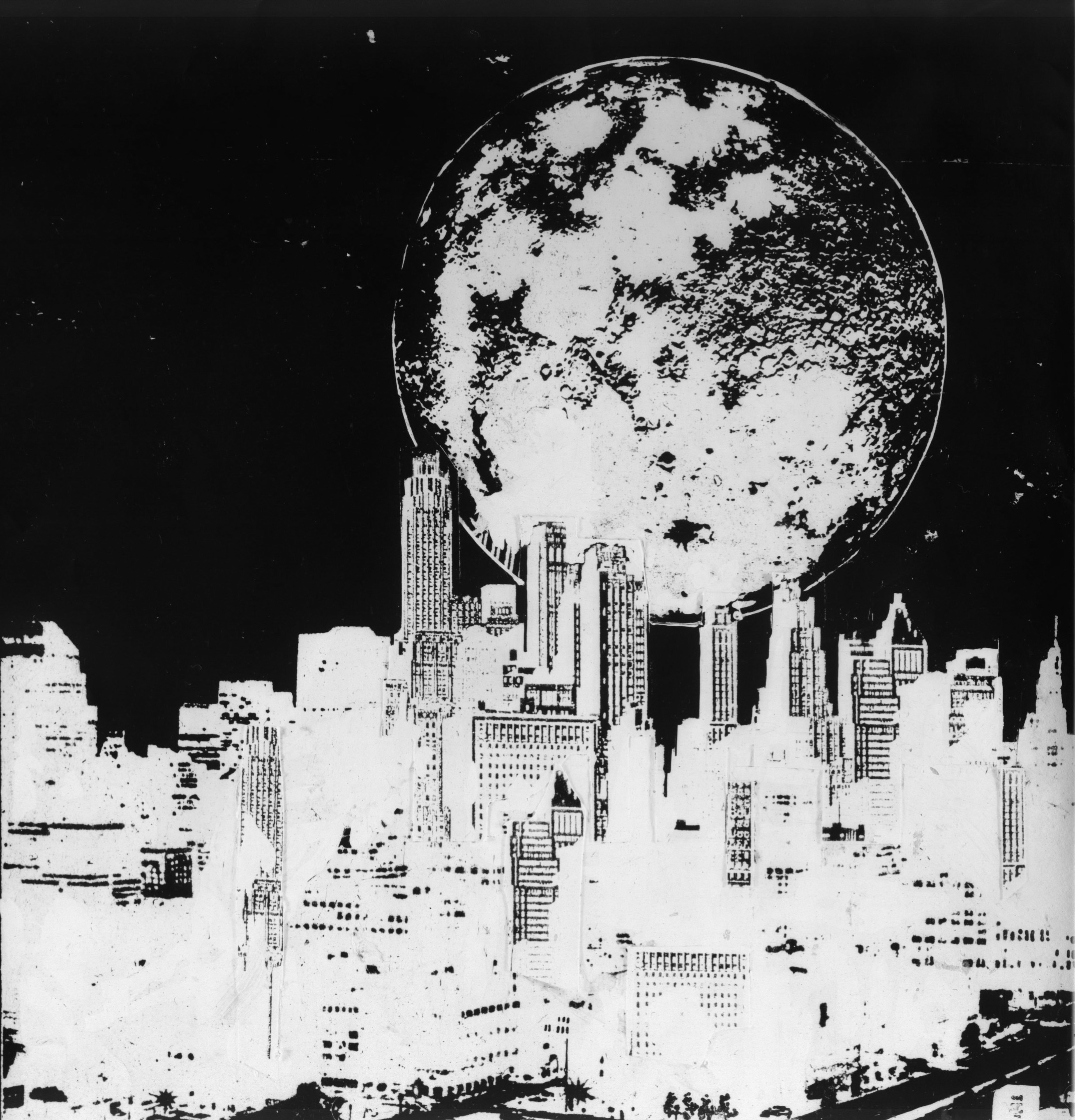
Nightlife was to be the first album from Thin Lizzy on the Polydor-Vertigo label so it was really important that everything from the music to the artwork was as good as we could produce. Luckily the art guys in Vertigo liked my work on Vagabonds so I was given a free hand though I would guess Philip and the new management of Chris O’Donnell and Chris Morrison, had a hand in that decision too.
Nightlife was a real labour of love

It was a huge opportunity for a young artist like myself, an Irish outsider in a UK industry renowned worldwide for graphic excellence, to show what I could do in this really competitive environment when so much importance was assigned to the graphics that accompanied the music album recording and the promotional material that followed from it.
One of the greatest moments of my life was the evening I and Philip strolled from the Lizzy office in dean street down to Shaftsbury avenue to visit a huge record shop so Philip just to say hello to the manager, kinda as a subtle promo.
When we rounded the corner we saw that the entire shopfront was covered with the album cover from top to bottom. Yep, one heart-stopping and wildly exciting moment and we both slapped each other in delight.
Time to get the show on the road
A lot of hard work went into this cover when the rough was approved.
Once I had the go-ahead for the final artwork I focused on the artwork and left the lettering until last.
I drew the foreground panther on the rock in brush and ink after a few roughs to work out the anatomy.
I had a Time-Life book on New York in my own library, with great photos of the city at night, and as far as I remember these photos made the bulk of my night-time cityscape photomontage. It’s cool to look back at my work method of that time.
That work method would be so alien to any of today’s artists who, like me, use photoshop to create any kind of photomontage assembly.
First I had to photograph my reference pix on a massive, 5 foot high bellows camera called a ‘Grant’ -so named after the manufacturer.
Anyone working in design and advertising back in those days would be well familiar with these types of gigantic photographic repro cameras and strangely enough, I still have mine in the attic, it’s just too damn big to get back down so I’ll leave it in my will to some unfortunate fellow artist or a print museum.
I had already produced a rough version for the preview sketch.
Methodology


By placing the reference photo on a large glass plate and a sheet of photo paper on the top glass I could produce a series of large 16”x11” negative photoprints and then, with a fine scalpel, cut each building or sections of buildings, out of each negative and pasted them in the order I visualized until they looked as good as they should.






If you have a look at the illustration above, the layers of photo-negatives are literally three-dimensional, with white paint used to disguise the joins so when this white muddy layer is rephotographed on the Grant, the colour is reversed from white to solid black and the entire montage works as a graphic as all the mid-tones have been literally dropped out so it looks more a graphic than a realistic photo.
Next I added the negative of the panther over the montage and again used thick white gouache to disguise the joins and cutmarks.
I placed this almost three-dimensional negative photomontage under the bottom glass plate of the Grant camera and using the bellows to resize the image which was then projected onto a sheet of clear lithographic film under red light darkroom conditions.
To understand this process think of animation cell: clear and easy to paint on both sides. Now after running my clear litho print thru the system of developer mix, fixative, and then wash to get rid of any of the chemicals in water, my print was ready but dripping wet.
Finally with the red light off and normal light back on I used to just peg the litho prints to a line in the bathroom and an hour later they were ready to be painted.



Next blog: Nightlife artistic influences.
